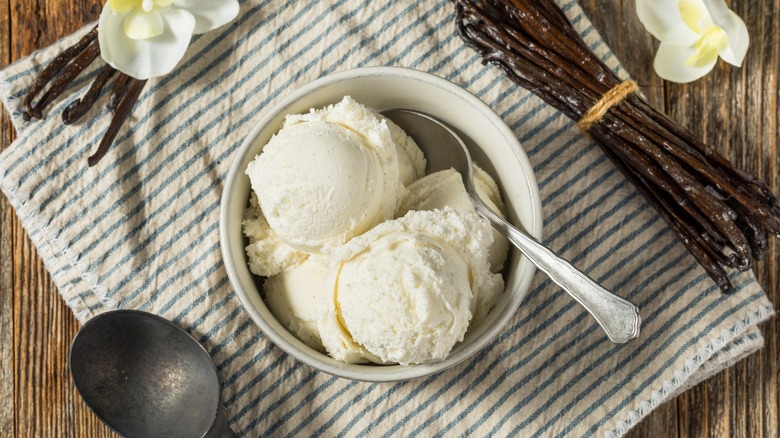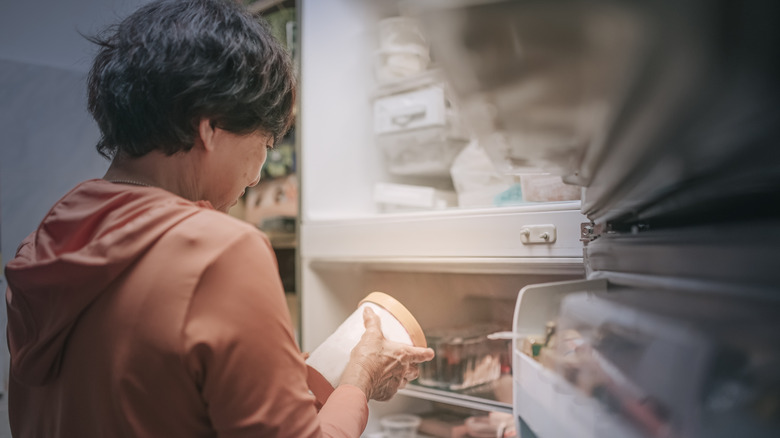How To Tell When Your Ice Cream Has Gone Bad
We may receive a commission on purchases made from links.
Ice cream is the perfect treat for those late-night cravings, and there are tons of flavors to satiate any palate, including the mysterious Blue Moon, which is both delicious and confusing. Unfortunately, if you're planning on stocking your freezer to ensure you never run out, it's important to remember that ice cream can and does go bad. (Even though we wish it would last forever.) That said, commercially made ice cream will last longer than homemade ice cream, thanks to added preservatives. Typically, a container bought from the store can last six months and a year, while ice cream without preservatives has a roughly three-month shelf life.
There are a few ways you can tell whether or not your pint of ice cream has gone bad, one of which is the formation of large ice crystals. While you can get rid of freezer burn on ice cream , and it's perfectly safe to eat, if the ice cream is thawed and refrozen too much, ice crystals can form throughout the mixture, altering its texture and flavor. If the freezer burn has gotten out of hand and turned things into a grainy mess, it's best to toss it.
Additionally, because ice cream is a dairy product, it can spoil much the same way as milk, especially if it's left at temps over 40 degrees Fahrenheit for more than two hours. If you notice any bloating, leakage, or sour smells, don't even do a taste test; just throw it out. Spoiled ice cream often changes color and becomes dull, while bacterial growth — amplified by the presence of sugar, which they feed on — can make ice cream overly sticky.
How you should be storing your ice cream to prevent spoilage
The way you store and handle ice cream can greatly impact its longevity. For instance, containers of ice cream should always be stored in the central part of your freezer, preferably towards the back, so fluctuating temperatures caused by opening and closing the door won't impact them. For this reason, the freezer door is one of the worst places to store ice cream, even if it makes your pints easier to grab. You may also consider storing ice cream tubs in freezer bags as an extra layer of protection against temperature changes and freezer burn.
Another good option for storing ice cream is inside a chest freezer if you have one. These are often much colder than freezers built into refrigerators, and you're less likely to open them frequently, which can reduce temperature fluctuations. That said, regardless of what type of freezer you use, you'll want to keep an eye on how stable the temperatures are. For instance, if the freezer door was accidentally left cracked, you should make sure your ice cream is still solid. If not, and you don't know how long it's been thawing, you should toss it.
The same rules apply for homemade ice cream, but you must choose an airtight container to store what you've made. Things like Zicoto's Reusable Ice Cream Tubs or Tovolo's Reusable One Quart Containers are essential for preventing freezer burn and preserving the taste and texture of your ice cream.

